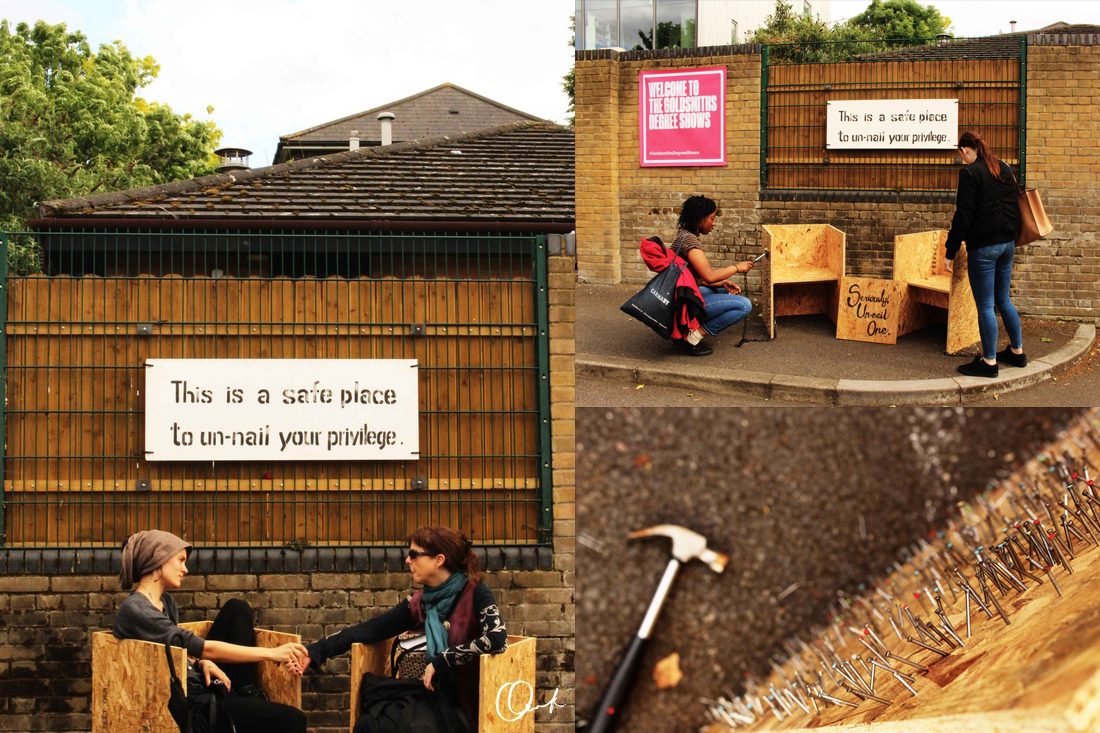The Social Art Award 2017
Can art change the world?
Under this question, the Institute for Art and Innovation e.V. had launched the first Social Art Award in 2017. Artists and cultural actors of all areas were invited to apply with their work to the field of social art. Artists from 131 countries responded with extraordinary works and projects.
On September 5, 2017, the three winners Lino Tonelotto from France, Quek Jia Qi from Singapore and Diogo da Cruz from Portugal were honored, and exhibited at WHITECONCEPTS Gallery in Berlin. They demonstrated with their politically engaged works that art can make current events visible and tangible. This is an important understanding for bringing forward the debate and thus a social change.
Learn more about it and get your copy of the Social Art Award Book (116 pages, English) featuring the Top50 artists.
To Order:
Printed Version (Softcover) – 25 EUR excl. delivery
E-Version – Free
See here the best entries:
A Safe Place to Un-Nail Your Privilege (2016)
Quek Jia Qi
This participatory installation in London SE14 that explores the potential of public spaces as meaningful brave spaces for critical social engagement. Presenting 4000 hammered nails on handmade chairs, strangers are encouraged to participate in the symbolic gesture of un-nailing and connect through conversations about privilege. As an aspiration of the piece to spark social justice dialogues, the piece serves to prompt the confrontation, awareness, reflection and empowerment of one’s privilege.
This participatory installation in London SE14 that explores the potential of public spaces as meaningful brave spaces for critical social engagement. Presenting 4000 hammered nails on handmade chairs, strangers are encouraged to participate in the symbolic gesture of un-nailing and connect through conversations about privilege. As an aspiration of the piece to spark social justice dialogues, the piece serves to prompt the confrontation, awareness, reflection and empowerment of one’s privilege.



